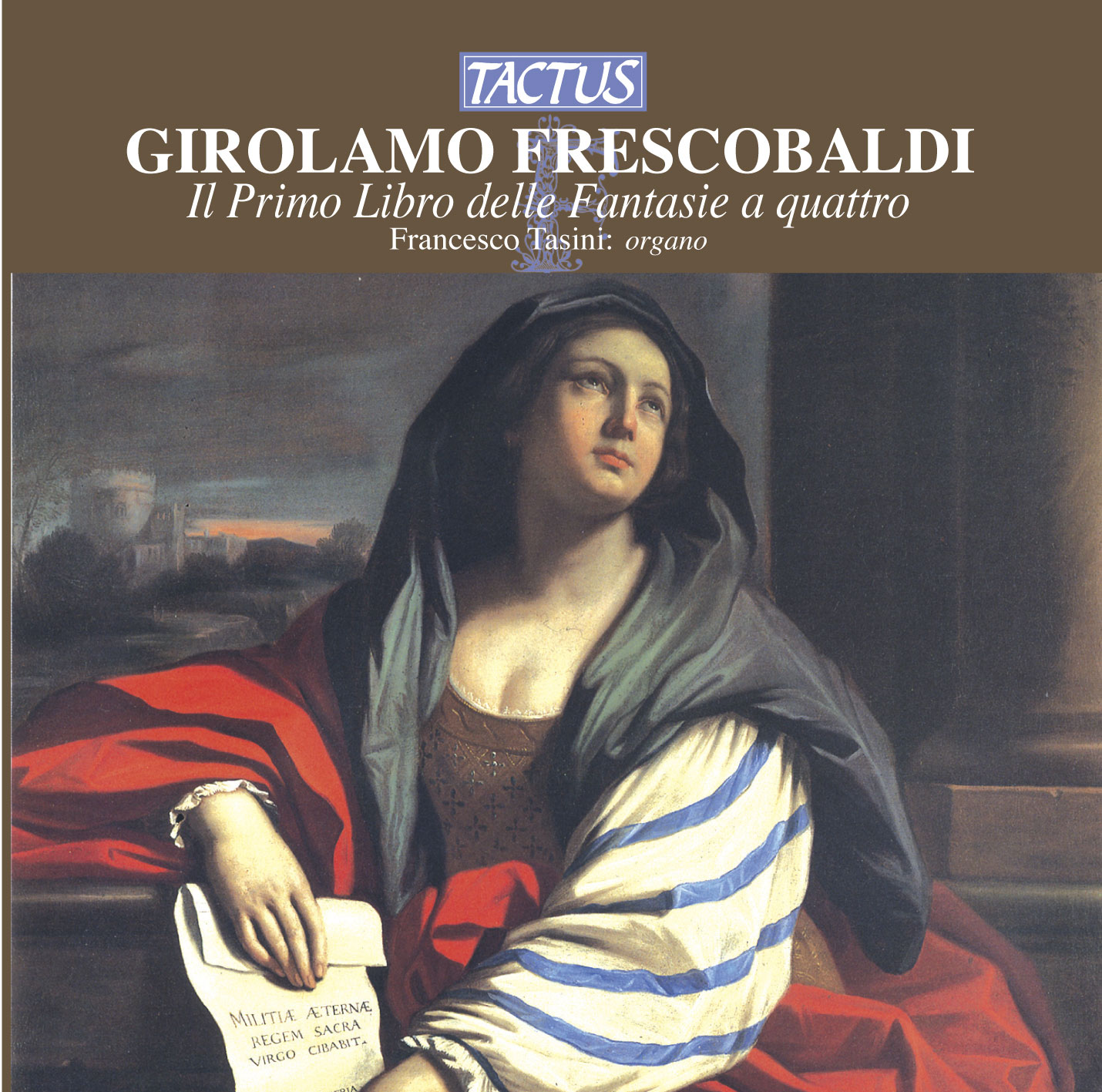FRESCOBALDI GIROLAMO
The twelve Fantasie by Frescobaldi – a kind of study in the contrapuntal ricercare tradition – are arranged according to the twelve ecclesiastical modes or tones, so keeping to a widespread theoretical and practical custom of organist/composers at that time, of using the cycle of eight or twelve modes in a similar number of ricercari.
In the same way as the Ricercate by Trabaci, Frescobaldi’s Fantasie are based on several themes simultaneously, which are indicated in the title.
The order is systematic: four series of three fantasie, each of which with one, two, three or four soggietti (subjects).
All the contrapuntal artifices are masterfully applied by the young and ingenious musician from Ferrara, such as diminution and augmentation (evident when repeated enunciation of an augmented subject produces a cantus firmus or an ostinato, as in the fantasia quarta), inversion (in the fantasia decima the four themes are actually two couples in a complete inversion) and the inganno technique, the purpose of which is to perform the whole composition with coherent deduction and continuous transformation of the original subject.
Thomas Morley’s definition of Fantasia is extremely illuminating: “When one or more subjects are taken at will, and, on the spur of the moment they are freely turned around and upside down, without being linked to a text or any other constraint other than to stay within the limits of the mode, exercising the capacity to digredire, addire, detrahire, introducing connecting dissonances, different proportions and slower and faster movements: this is what composing Fantasies means (Thomas Morley, A Plaine and Easy Introduction To Practicall Musicke, London 1597, page 180).
As, according to the style initiated by Giovanni Gabrieli, and also characteristic of the exponents of the Neapolitan school, Frescobaldi presents the subjects of a multiple fantasia simultaneously, and when the subjects increase the interrelations become increasingly complex.
The Fantasie should not however be considered to be mere virtuosic cerebral exercises, but are discursive languages evident in the respective formal ways of expression: different and contrasting sections clearly marked by cadenzas and changes in metre.
The sophisticated counterpoint in the independent parts dissolves both at the touch of the hand and on being heard, in a pure succession of keyboard chords, similar to a colouristic harmonic flow.
The use of the variation and transformation of themes obtained by reading some notes in the subjects in solmization (the so-called “imitazione d”inganno”) is particularly significant; reading the themes using the artifice of solmization and mutation from one hexachord to another (hexachordum naturale, molle and durum) generates inganni that alter the notes of the subjects.
This reserved, arcane and incise technique, typical of the Neapolitan school, is widely used here by Frescobaldi.
It is a completely different practise in variation from the ordinary imitative-contrapuntal techniques; the inganno leads us to consider the subject to be an element that can generate new “figures”, as if it hides them in its innermost nature: a sort of perspective and Neoplatonic forma mentis.
Tracklist
Frescobaldi, Girolamo Alessandro
Fantasie, Book 1
1 - Fantasia prima, sopra un soggietto (4:48)
2 - Fantasia seconda, sopra un soggietto solo (5:52)
3 - Fantasia terza, sopra un soggietto solo (4:42)
4 - Fantasia quarta, sopra due soggietti (5:14)
5 - Fantasia quinta sopra doi soggietti (6:28)
6 - Fantasia sesta, sopra doi soggietti (6:00)
7 - Fantasia settima, sopra tre soggietti (6:14)
8 - Fantasia ottava, sopra tre soggietti (6:02)
9 - Fantasia nona, sopra tre soggietti (6:34)
10 - Fantasia decima, sopra quattro soggietti (5:18)
11 - Fantasia undecima, sopra quattro soggietti (5:58)
12 - Fantasia duodecima, sopra quattro soggietti (5:50)
- Composer: FRESCOBALDI GIROLAMO
- Performers: Francesco Tasini, Organ
- Historical Period: Humanism and Renaissance
- Code: TC 580607
- Edition: SEPTEMBER 2007
- Barcode: 8007194103755
- Set: 1
- Total tracks: 12
- Total duration: 01:09:00






